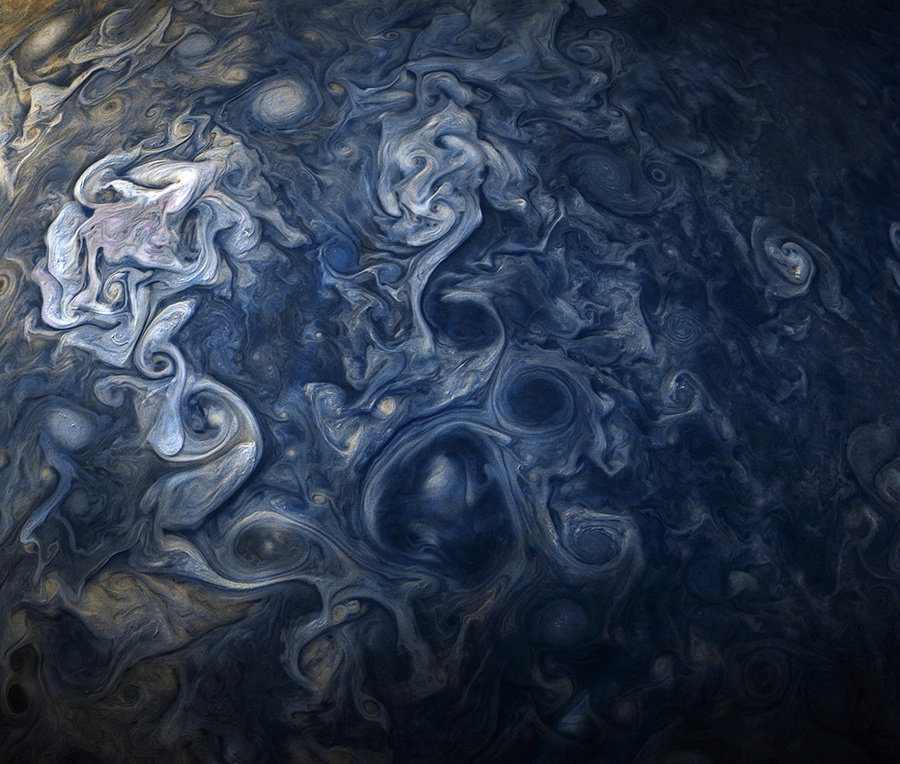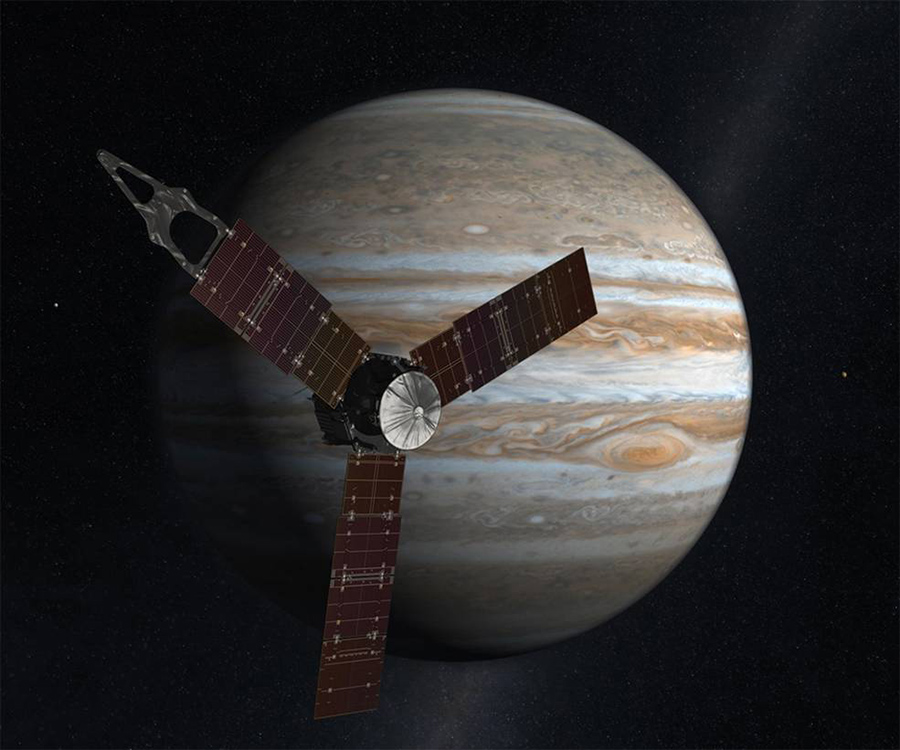NASA has just released a series of photos of Jupiter taken by Juno mission spacecraft, and we are quite enjoying the incredible view of the planet’s storm.
Looking like Van Gogh’s The Starry Night, the images show us an immense storm in the gaseous planet that makes the clouds take circular and oval shapes. According to the NASA statement, each cloud is more than 4,000 miles (6,500 km) long, with a range of colors between dark blue and white.
Juno took the photos during the craft’s ninth flyby on October 27, just 11,747 miles (18,906 km) away from the planet’s surface – roughly the distance between New York City and Perth, Australia.

Of course, if we think about it without considering how immense space is, we would feel that’s a vast distance. But just remember that there are 238,900 miles (384,400 km) between the Earth and the moon and that Jupiter is 318 times our world.
Now, the scale of this image is 7.75 miles for each pixel – or about 12 km/pixel. In total, these photos show 15,000-mile (24,000 km) from the total cloud system in the northern hemisphere of Jupiter.
The photos were taken at a latitude of 57.57 degrees, which would mean almost three-fifths of distance between Jupiter’s equator and the planet’s north pole.
Scientists believe that the storm started 350 Earth-years ago and that it will likely continue for a long time.
“Because of the Juno-Jupiter-sun angle when the spacecraft captured this image, the higher-altitude clouds can be seen casting shadows on their surroundings,” Nasa said in a statement. “The behavior is most easily observable in the whitest regions in the image, but also in a few isolated spots in both the bottom and right areas of the image.”
This is not the first photos that NASA releases from Juno. The most recent came just on last month, and they are amazing too.
One photo from this series shows us a total of eight storms in Jupiter’s system and barely covers the totality. Each cloud travels at about 129,000 mph (60 km/s).
NASA’s Juno
Juno spent five years traveling the 1.8 billion-mile distance that’s between the Earth and the fifth planet in our Solar System. Right now, it is floating in a frozen environment over 3,100 miles (5,000 km) from the planet’s clouds.

Although Juno is the first spacecraft that flies this close to Jupiter, NASA has sent two others. However, they were destroyed after entering the planet’s atmosphere.
It is perilous for Juno to fly over Jupiter with such a distance in between. The immense storm creates a frying circuit of radiation, which works as a powerful magnetic field.
Scientists believe that no other environment generates more radiation than this circuit of particles traveling almost at the speed of light. However, NASA shielded Juno to protect it against any kind of radiation.
Source: NASA

Shielded it with what? What a wondrous artwork. Those colors are supberb.